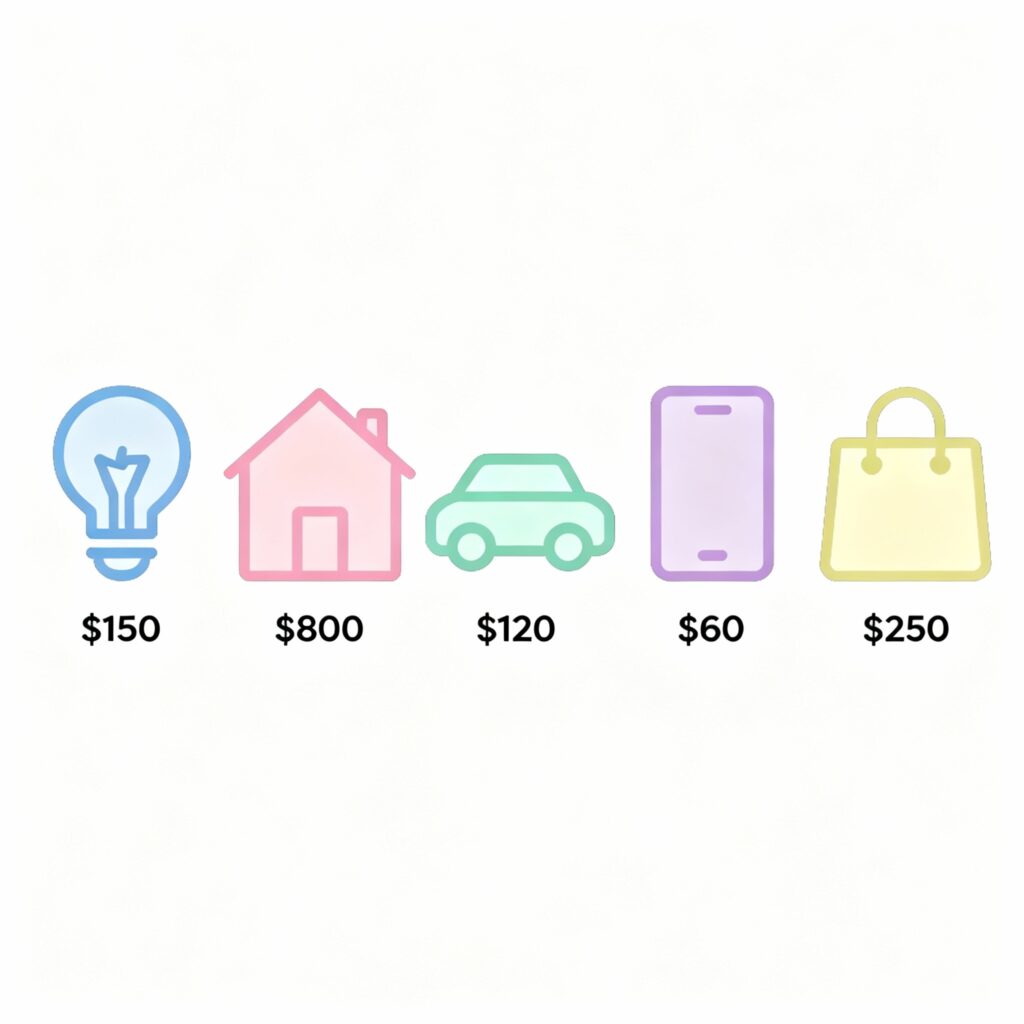Introduction
A recent Wall Street Journal article profiled two hard-working mothers navigating rising household costs while raising children on modest incomes. Despite earning well above the poverty line, they teeter on the edge of financial collapse.
Rent, utilities, transportation, groceries—it’s not about laziness. It’s about living in a system designed without margin. What hit hardest weren’t just the stresses—but the numbers behind them:
- $500/month electric bills
- $400 for phone and internet
- $287 for car insurance
- $1,700 market rent for a five-bedroom home, partially offset by a $500 voucher — still $1,200/month out-of-pocket
This isn’t deep poverty. These are working families doing their best—yet still stuck.
Their stories offer a powerful warning: Without structure, financial erosion is inevitable.
Lesson 1: Recurring Costs Quietly Bleed You Dry
These families aren’t collapsing because of one major emergency—they’re being drained, slowly but relentlessly, by high recurring costs.
Now compare that to an optimized framework:
- Car insurance ~ $100/month
- Electricity < $10/month with solar
- Phone under $20/month with budget carriers
That gap might seem small monthly—but over a year, it’s thousands lost or kept. Over five? It’s wealth built… or burned.
Takeaway:
Recurring costs are the silent killers of progress. Before you increase income, tighten your infrastructure. Long-term wealth grows from compounding efficiencies.
Lesson 2: Renting Without Leverage Builds Nothing
The families profiled paid $1,200/month in rent—even with government assistance. That rent grants no equity, no tax benefits, and zero long-term security.
Meanwhile, those who own—even modest, well-maintained homes—gain:
- Predictable costs
- Asset appreciation
- Control over renovations and utilities
- A foundation for generational stability
Takeaway:
Rent is sometimes necessary, but ownership—when pursued strategically—is one of the clearest paths to wealth. Without it, you’re building someone else’s future, not yours.
Lesson 3: Instability Has a Compounding Price
Missed bills. Maxed-out credit lines. Constant trade-offs.
These aren’t just logistical headaches—they have a high and ongoing cost:
- Late fees and overdrafts
- Higher premiums due to poor credit
- Lost access to favorable rates or housing opportunities
- Emotional toll → poor decision-making → more instability
Takeaway:
Wealth prefers order. Financial clarity converts stress into surplus. Build systems that reduce friction and invite calm.
Lesson 4: Mindset Shapes Your Financial Architecture
Money alone isn’t enough. Without systems, intention, and long-term vision, even steady income slips through the cracks.
Those who transition from survival to stability usually adopt key mindset shifts:
- Thinking in decades, not days
- Valuing assets over optics
- Optimizing foundations before scaling up
The result? Margin. Momentum. And eventually, mobility.
Takeaway:
Wealth isn’t just income—it’s structure, psychology, and habit. You get what you repeat.
Final Reflection: Chaos Erodes. Structure Compounds.
The families featured aren’t failing—they’re trying. But their struggle underscores this truth:
“If your financial life isn’t intentionally structured for wealth, wealth won’t arrive by accident.”
You don’t need to be rich to get ahead—but you do need:
- Low fixed costs
- Ownership where possible
- Systems that prevent erosion
- Planned margin for uncertainty
In the long run:
- Structure beats scramble.
- Clarity outpaces chaos.
- Compounding, not brute hustle, builds lasting wealth.
For more context, see the
Wall Street Journal article
titled “Earning More but in Worse Shape: Hardship Overwhelms Many American Families”.

